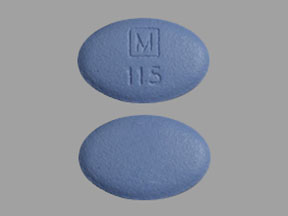Xartemis XR Dosage
Generic name: OXYCODONE HYDROCHLORIDE 7.5mg, ACETAMINOPHEN 325mg
Dosage form: tablet, coated
Drug class: Narcotic analgesic combinations
Medically reviewed by Drugs.com. Last updated on Aug 12, 2025.
2.1 Important Dosage and Administration Instructions
XARTEMIS XR is not interchangeable with other oxycodone/acetaminophen products because of differing pharmacokinetic profiles that affect the frequency of administration.
- Use the lowest effective dosage for the shortest duration consistent with individual patient treatment goals.
- Initiate the dosing regimen for each patient individually, taking into account the patient's severity of pain, patient response, prior analgesic treatment experience, and risk factors for addiction, abuse, and misuse.
- Monitor patients closely for respiratory depression, especially within the first 24 to 72 hours of initiating therapy and following dosage increases with XARTEMIS XR and adjust the dosage accordingly.
XARTEMIS XR is given orally. Instruct patients to swallow XARTEMIS XR tablets whole, one tablet at a time, with enough water to ensure complete swallowing immediately after placing in mouth. Do not break, chew, crush, cut, dissolve or split the tablets. Breaking, chewing, crushing, cutting, dissolving or splitting XARTEMIS XR tablets will result in uncontrolled delivery of oxycodone and can lead to overdose or death.
The total daily dose of acetaminophen from all drug products should not exceed 4,000 milligrams.
2.2 Initial Dosage
Use of XARTEMIS XR as the First Opioid Analgesic
The recommended dosage of XARTEMIS XR is 2 tablets every 12 hours administered with or without food. The second dose of 2 tablets may be administered as early as 8 hours after the initial dose if patients require analgesia at that time. Subsequent doses are to be administered 2 tablets every 12 hours.
2.3 Dosage Modifications in Patients with Hepatic Impairment
In patients with hepatic impairment start with one tablet and adjust dosage as needed. Monitor closely for respiratory depression, sedation, and hypotension.
2.4 Dosage Modifications in Patients with Renal Impairment
In patients with renal impairment start with one tablet and adjust dosage as needed. Monitor closely for respiratory depression, sedation, and hypotension.
2.5 Dosage Modifications with Concomitant Use of Central Nervous System Depressants
If the patient is currently taking a central nervous system (CNS) depressant and the decision is made to begin XARTEMIS XR, start with one tablet every 12 hours, consider using a lower dosage of the concomitant CNS depressant, and monitor patients for signs of respiratory depression, sedation, and hypotension.
2.6 Discontinuation of XARTEMIS XR
When a patient who has been taking XARTEMIS XR regularly and may be physically dependent no longer requires therapy with XARTEMIS XR, taper the dose gradually, by 25% to 50% every 2 to 4 days while monitoring carefully for signs and symptoms of withdrawal. If the patient develops these signs or symptoms, raise the dose to the previous level and taper more slowly, either by increasing the interval between decreases, decreasing the amount of change in dose, or both. Do not abruptly discontinue XARTEMIS XR in a physically-dependent patient.
More about Xartemis XR (acetaminophen / oxycodone)
- Check interactions
- Compare alternatives
- Reviews (5)
- Drug images
- Side effects
- During pregnancy
- FDA approval history
- Drug class: narcotic analgesic combinations
Patient resources
Other brands
Percocet, Endocet, Roxicet, Tylox, ... +8 more
Professional resources
Other brands
Percocet, Endocet, Roxicet, Tylox, ... +3 more
Related treatment guides
See also:
Further information
Always consult your healthcare provider to ensure the information displayed on this page applies to your personal circumstances.


